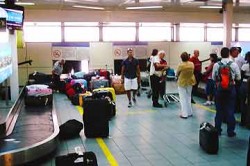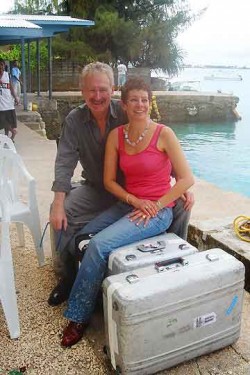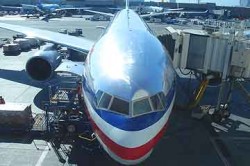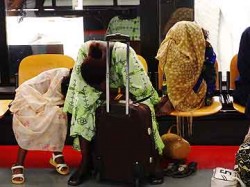
As a very frequent flyer, I can understand that 12,000+ laptops are lost each week in U.S. airports. What’s shocking is that, according to a study, only 33% of laptops that make it to lost-and-found are reclaimed. My first thought is: insurance fraud. Lose it, claim it, get a new machine.
The point of the study, though, is really data loss, theft, and abuse. Who cares about the hardware? Wouldn’t it be fascinating to know how many of those never-claimed laptops sitting in lost-and-found actually contain sensitive data? And when was the machine last logged into? After the loss?
Having lost a few precious things myself (a special scarf, an autographed book), I know how impossible it is to contact airport lost-and-found, and the runaround you get if you luck out and reach a human. “You have to contact the airline,” “just file a report online,” “the airline controls those gates,” etc. Hopeless.
And I hate to say it but, I’m convinced that airplane cleaners reward their thankless jobs by the old “finders keepers” law. How else to explain a book left between the window seat and the wall, gone without a trace five minutes after I disembarked? Losers weepers.
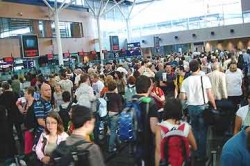
I just re-read the study, Ponemon Institute’s Airport Insecurity: The Case of Missing & Lost Laptops.
I had first read it back in July when its stats were thoroughly discussed on Schneier’s site. One of my own comments there is “no departments try to return property. Look at all the staffing cuts. Who’s the first to go? An individual might try to return something, but not a department. Even if you know you left something on a plane, even if you report it a minute after you get off, you can kiss it goodbye.”
Most laptops are lost at the security checkpoint—no surprise. People think the area is full of “security” personnel, and that makes their stuff secure. Many times, I pick up my own computer, then Bob’s. No one notices or cares that I picked up two machines. No one questions me whether I have two in my arms at once, or pack up mine and walk off with another.
While the report’s stats are interesting, I think the “Recommendations and Conclusions” are unrealistic. They suggest you allow enough time, as if you haven’t just run between terminals as fast as you can to make your “airline legal” but still-tight connection. They suggest you carry less; hey, we carry what we need, and what we don’t trust the airlines (or TSA) with in checked bags. They suggest you think ahead and have a mental strategy at security. That works—as long as you aren’t in a sleep-deprived fog from flying 14 or more cramped hours and now you don’t know if it’s morning or night. And as long as everything at the checkpoint goes smoothly, which is never certain. Someone cuts in front of you and delays you from getting to the other side, where your stuff sits vulnerable. A bossy TSA agent disrupts your strategy because he wants it done his way. TSA needs to rescan half your stuff and your items are spread out all over.
I have long had a strategy. I lay down my things—always the same things—in a strict order. This allows me to pick them up on the other side and reassemble everything quickly and logically. Every once in a while, that bossy TSA employee will rearrange my things, or hold back some of them in order to re-run someone else’s. This tampers with the otherwise reliability of my strategy.
I like two of the study’s recommendations. One is obvious, to label your laptop so you can be easily contacted. The other mildly recommends that airports make it easier for passengers to report losses. That would really help. Fat chance.
![]()




